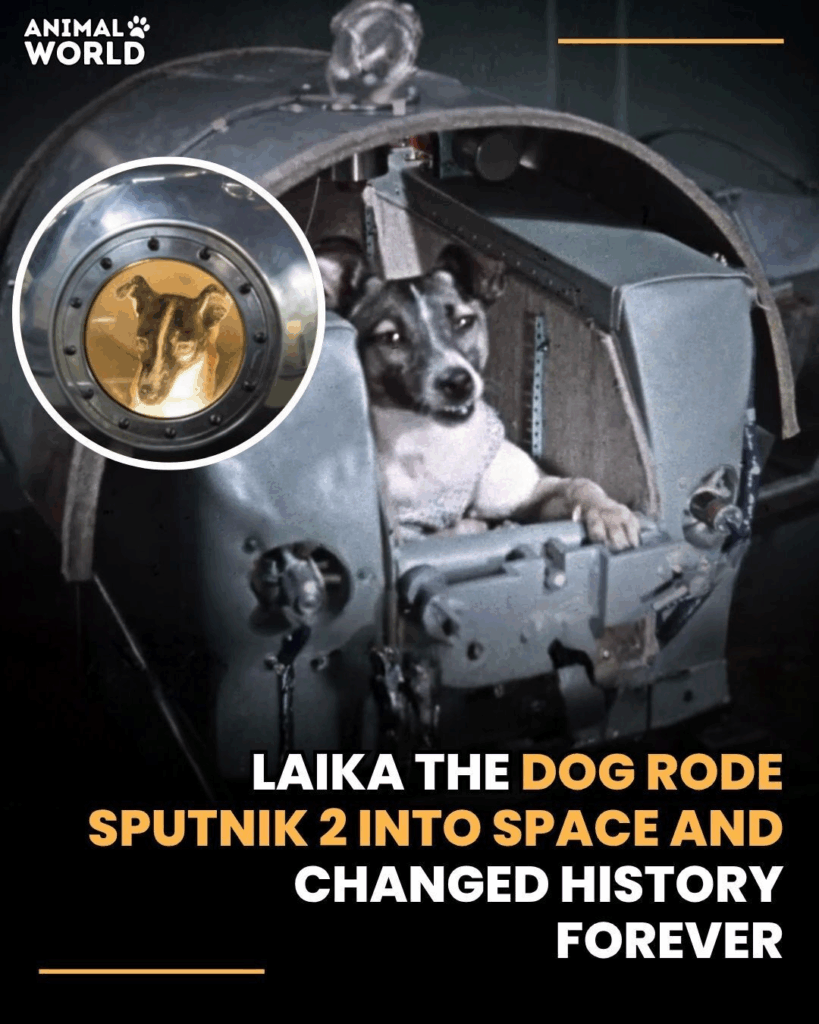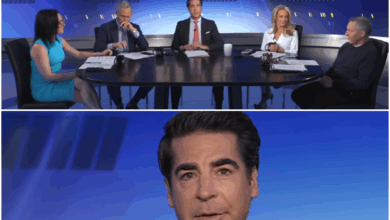f.“The Little Dog Who Never Came Home — The Heartbreaking Truth Behind Humanity’s First Space Hero”.f

A small stray dog from Moscow riding into the dark of space. That dog was Laika. Bright-eyed, calm, and curious, she wandered the cold streets of Moscow, unaware that her destiny would forever intertwine with the stars. On November 3, 1957, Laika became the first living creature to orbit the Earth aboard Sputnik 2 — a mission that marked both a triumph of human ingenuity and a heartbreaking moral question.

She wasn’t born for history books or laboratories. She was just a little dog who once sought warmth near food stalls and friendly hands. Soviet scientists selected her for her gentle temperament and resilience — the perfect candidate for an experiment that had never been attempted before. Laika was trained to sit calmly in tight spaces, to eat from special gel packs, to endure the strange vibrations of takeoff. Every heartbeat, every breath she took was recorded and studied. Yet no one could explain to her what was about to happen.
When Sputnik 2 rose into the cold November sky, the world held its breath. Newspapers around the globe hailed it as a miracle — proof that humanity could send life into space. Soviet officials assured everyone that Laika would be safe, comfortable, even content, floating peacefully around Earth. But behind the triumphant headlines was a painful truth: there was no plan to bring her home.
Hours after the launch, the capsule overheated. Laika’s heartbeat spiked, her breathing grew frantic, and soon the signals faded. Alone above the world she had only ever known from the ground, she slipped away — silent, unseen, and unforgettable.
Science advanced that day, but a life was lost. Two truths that can’t be separated.
In the years that followed, Laika became a legend — celebrated as the first traveler among the stars. Statues were built. Songs were written. Her name appeared in textbooks as a symbol of courage and sacrifice. But behind the myth was still a real dog — one who wagged her tail, loved attention, and trusted the people who fed her. Remembering her this way doesn’t weaken her story; it deepens it. It turns a line in history into a heartbeat.
The Soviet scientists who worked with Laika later expressed deep remorse. One of them, Oleg Gazenko, admitted years after the mission:
“The more time passes, the more I’m sorry about it. We did not learn enough from the mission to justify the death of the dog.”
Those words echo the complex emotions that still surround Laika’s legacy — pride in human progress, yet sorrow for the price it demanded.
Laika’s flight paved the way for Yuri Gagarin, Valentina Tereshkova, and all who followed. Thanks to her, engineers learned how living bodies react to weightlessness, confinement, and stress in space. Every astronaut who has ever looked back at Earth from orbit, in some small way, owes their safety to the lessons Laika’s mission provided.

But her legacy isn’t only scientific. It’s ethical. Laika changed the way the world thought about animals in research. The shock of her death sparked international debate about the morality of experimentation. Animal welfare movements gained strength, and future missions began to prioritize the safety and return of their passengers — whether animal or human. Her story didn’t just expand our reach to the stars; it expanded our understanding of compassion.
To this day, Laika remains a paradox — a hero and a victim, a pioneer and a casualty. Her journey reminds us that progress, while glorious, is never without consequence. The stars inspire us, but they also reflect the choices we make to reach them.

Imagine her final moments: a small dog, heart racing, surrounded by the hum of machines, watching the blue curve of Earth below. She couldn’t have known she was making history. She couldn’t have known that millions would someday whisper her name with both pride and sorrow. But maybe, just maybe, in those fleeting moments, she saw something beautiful — the sunrise over her home planet, the light she had chased all her life.
More than sixty years later, Laika’s story still moves people across the world. Artists paint her silhouette against the cosmos. Children learn her name in classrooms. Space lovers place her among the stars, not as a symbol of conquest, but of empathy — a reminder that even the smallest life can carry the weight of humanity’s dreams.
Laika wasn’t just “the first living creature in space.” She was the first friend we sent to the heavens. A symbol of courage we didn’t fully understand, and a lesson in kindness we must never forget.
Progress is thrilling, but kindness matters just as much. Laika reminds us that behind every “first,” there is a story, a life, a heartbeat.
Somewhere, in the quiet of the universe, perhaps a small dog with bright eyes still runs among the stars — free at last, wagging her tail, forever remembered as humanity’s first orbiting friend.
👉 Takeaway: Before we celebrate how far we’ve come, we should always remember who helped us get there — even the smallest, most loyal among us.


